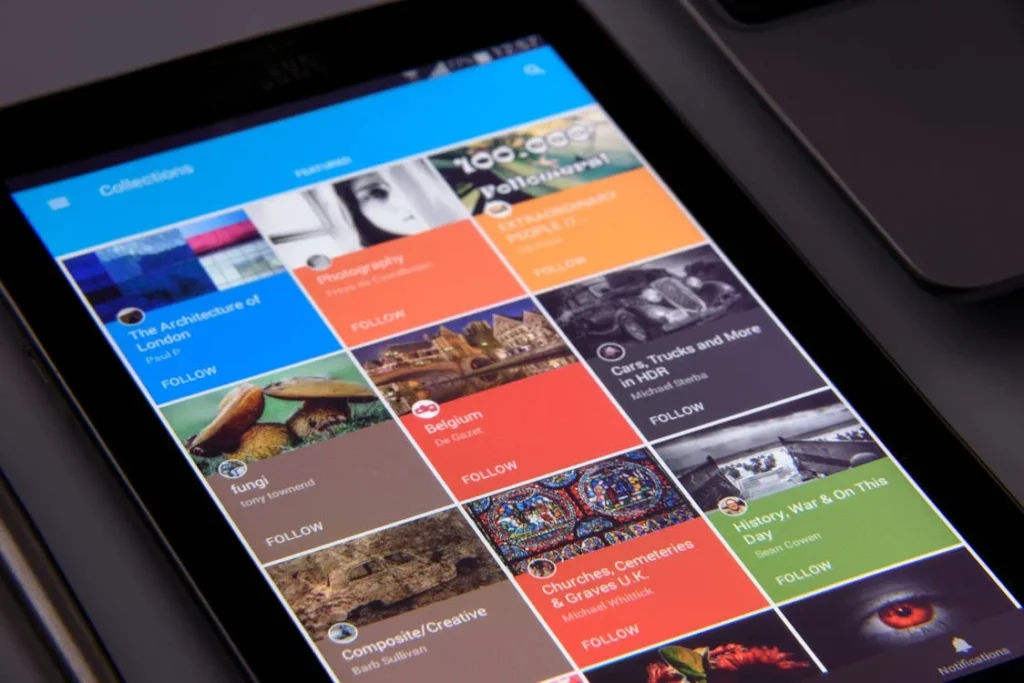(This Article has been revised, edited and added to, by Poulomi Chakraborty.)
- Understanding the Symbiotic Relationship
- Crafting SEO-Driven Email Campaigns
- Encouraging Engagement through Email
- Optimizing Landing Pages for Email Traffic
- Link Building via Email Campaigns
- Guest Post Outreach
- Collaboration and Partnerships
- Integrating Influencer Outreach into Your Email Strategy
- Leveraging Email Segmentation for Targeted Link Acquisition
- Creating Share-Worthy Content to Facilitate Organic Link Growth
- Optimizing Email Content for Social Sharing and Visibility
- Building Relationships for Long-Term Link Building Success
- Analyzing the Impact: Email and SEO Metrics
- Integrating Tools: Email Marketing and SEO Software
- Wrapping it Up
Email marketing remains one of the most effective channels for nurturing leads and converting them into customers, especially in the SaaS sector. When combined with SEO efforts, the synergy can create an unbeatable strategy for driving high-quality traffic to your offers. Let’s dive into how you can integrate these two domains to maximize results.
Understanding the Symbiotic Relationship

Why SEO Matters for Email
SEO isn’t just about making your website rank higher; it’s also about understanding what your target audience is searching for. This can provide:
- Audience Insight: Using keyword research tools, you can glean insights into the problems and needs of your audience. This knowledge can be instrumental in crafting tailored email content.
- Topical Relevance: If your emails address trending topics or frequently searched queries in your niche, they’re more likely to be opened and engaged with.
Why Email Benefits SEO
Email doesn’t directly impact search rankings, but it indirectly boosts SEO through:
- Driving Traffic: By directing subscribers to new or important content on your website, you can increase organic traffic, which is a positive signal to search engines.
- Engagement Metrics: When your email recipients spend more time on your site or interact positively, it sends positive user engagement signals.
The Foundation of a Symbiotic Relationship
In the rapidly evolving landscape of digital marketing, the interplay between Search Engine Optimization (SEO) and email marketing stands as a testament to the power of integrated marketing strategies. At its core, this relationship thrives on the seamless integration of content creation and distribution, driving mutual benefits that extend beyond the surface level of increased traffic and engagement.
Deepening Audience Understanding Through SEO Insights
Harnessing SEO to deepen your understanding of your audience presents a strategic advantage that is unparalleled. The rich data obtained from SEO activities, including keyword analysis and user behavior, offers a window into the desires, problems, and language of your target market. This insight is not just beneficial; it’s transformative. By analyzing the terms your audience uses to search for solutions online, you can tailor your email content to speak directly to their needs, fears, and aspirations, thereby fostering a deeper connection.
Strategic advice for startup founders revolves around leveraging SEO tools to conduct thorough market research. This means not just identifying the keywords with high search volumes but also understanding the intent behind these searches. Is your audience looking for information, seeking to make a purchase, or comparing products? By aligning your email content with these intents, you can craft messages that resonate on a personal level, increasing the likelihood of engagement and conversion.
Leveraging Email to Boost SEO Performance
While it’s well acknowledged that email marketing does not directly impact SEO rankings, the indirect benefits are significant and warrant strategic consideration. Email marketing can drive targeted traffic to your website, reducing bounce rates and increasing the time spent on page—both key indicators of quality that search engines use to rank sites. Moreover, by promoting content that your audience finds valuable, you’re more likely to earn backlinks, as subscribers share your content within their networks or reference it in their own publications.
For startup founders, the actionable advice here is to create email content that is not only engaging but also shareable. Encourage your subscribers to share your tips, guides, and insights on social media or with their peers. Include easy-to-use share buttons in your emails and incentivize sharing where appropriate. This strategy not only amplifies your content’s reach but also enhances your site’s authority and search engine rankings over time.
Creating a Feedback Loop Between SEO and Email Marketing
A strategic feedback loop between SEO and email marketing efforts can provide invaluable insights that fuel ongoing optimization and refinement. Use the analytics from your email campaigns to inform your SEO strategy. Which emails have the highest open rates? What topics do your subscribers engage with the most? These insights can guide your content creation efforts, ensuring that your website is populated with content that your audience finds relevant and valuable.
Similarly, SEO can inform your email marketing strategy. Which pages on your site receive the most traffic? What are the common questions people ask in search engines? Use this data to tailor your email content, addressing these interests and questions directly. This not only increases the relevance of your emails but also positions you as a thought leader in your space.
Strategic Integration for Maximum Impact
For SaaS startups, where competition is fierce, and the product offerings are often complex, integrating SEO and email marketing strategies can be a game-changer. Start by creating high-quality, SEO-optimized content that addresses the specific needs and pain points of your target audience. Then, use email marketing to promote this content, drawing readers back to your site and encouraging them to engage further.
Develop a content calendar that aligns your email marketing campaigns with your SEO strategy, ensuring a consistent and cohesive message across all channels. Test different approaches to see what resonates best with your audience, and be prepared to adjust your strategies based on performance data and changing market dynamics.
The symbiotic relationship between SEO and email marketing holds immense potential for SaaS startups looking to drive traffic, engage their audience, and convert leads into customers. By understanding and leveraging the strengths of each channel, you can create a powerful integrated marketing strategy that propels your business forward in a crowded digital landscape. Remember, the key to success lies in continuous learning, experimentation, and adaptation. With a strategic approach to SEO and email marketing, you can achieve sustainable growth and build lasting relationships with your customers.
Crafting SEO-Driven Email Campaigns

Keyword-Optimized Subjects
Much like crafting an engaging meta title for a webpage, your email’s subject line should be enticing and relevant.
- User Intent: Think about what your subscribers would want to read. Use keyword insights to craft subjects that resonate with their needs and interests.
- Avoid Clickbait: Misleading subjects can harm your brand’s reputation and increase the unsubscribe rate. Be genuine and clear about the email’s content.
Content that Matches the Search Intent
Once the recipient opens your email, the content should match their expectations set by the subject line.
- Valuable Information: Ensure your emails provide genuine value. Whether it’s a how-to guide, news, or special offers, it should be relevant to the reader’s interests.
- Encourage Click-throughs: Integrate calls-to-action that guide readers to further content or offers on your site.
Elevating Email Content with SEO Insights
The fusion of SEO strategies into email campaigns opens a realm of opportunities for SaaS startups to captivate and engage their audience. The essence of crafting SEO-driven email campaigns lies in leveraging SEO insights to fine-tune the relevance and appeal of your email content. This integration ensures that your emails not only resonate with your subscribers but also guide them smoothly along the customer journey, from awareness to conversion.
Tailoring Content for the Search-Savvy Subscriber
In an era where subscribers are inundated with digital content, personalizing your email campaigns based on SEO insights can significantly increase the open and engagement rates. By understanding the search behaviors and preferences of your target audience, you can create emails that feel tailor-made for each subscriber. This strategy involves analyzing search trends, keyword performance, and the content topics that garner the most attention on search engines. Armed with this information, you can craft email content that addresses the specific interests and questions of your audience, making every email you send feel both personal and relevant.
For SaaS startup founders, the implication is clear: dive deep into your SEO data to uncover the themes and questions that captivate your audience. Use these insights to design email campaigns that speak directly to the needs and curiosities of your subscribers, thereby fostering a deeper connection and driving engagement.
Enhancing Email Engagement with Rich Content
The digital age has transformed subscribers into sophisticated consumers of content who value quality and relevance above all. Incorporating rich content like infographics, videos, and interactive tools in your emails can significantly amplify engagement and drive traffic to your site. This strategy leverages the power of visual and interactive elements to make complex information more digestible and engaging, particularly beneficial for SaaS startups whose products or services may require detailed explanation or demonstration.
Strategic integration of rich content in emails not only captivates subscribers but also encourages them to explore your offerings in greater depth by visiting your website. Furthermore, when these content pieces are optimized for SEO and shared across your digital platforms, they contribute to a cohesive online presence that enhances both your email and SEO performance.
Optimizing for Mobile: A Critical Consideration
With the increasing prevalence of mobile devices as the primary means of accessing emails, optimizing your SEO-driven email campaigns for mobile is not just advisable; it’s essential. This means ensuring that your emails are not only mobile-friendly in design but that the content itself is optimized for mobile consumption. Short, impactful headlines, concise content, and easily clickable links and CTAs are key elements of mobile optimization that can dramatically improve the user experience and engagement rates.
For startup founders, recognizing the mobile-first nature of today’s digital landscape is crucial. Ensure that your email marketing tools and platforms allow for mobile optimization and test your emails on various devices to guarantee a seamless user experience. This attention to detail can be the difference between an email that converts and one that is ignored.
Building Authority Through Thought Leadership
In the competitive SaaS sector, establishing your brand as a thought leader can significantly enhance the effectiveness of your SEO-driven email campaigns. By sharing insights, trends, and forward-thinking perspectives in your emails, you can elevate your brand’s status in the eyes of your subscribers. This approach not only fosters trust and credibility but also positions your emails as a valuable resource, encouraging higher engagement and sharing among your audience.
To implement this strategy, startup founders should focus on creating high-quality, original content that addresses the emerging trends and challenges within their industry. Collaborate with industry experts, leverage proprietary data, and offer unique perspectives that distinguish your content from the rest. Sharing this content through your email campaigns not only enriches the subscriber experience but also strengthens your SEO by attracting traffic and backlinks to your site.
Crafting SEO-driven email campaigns is an art that combines the analytical prowess of SEO with the personal touch of email marketing. For SaaS startups, navigating this terrain requires a deep understanding of your audience, a commitment to quality content, and an innovative approach to leveraging digital tools. By integrating SEO insights into your email campaigns, optimizing for mobile, incorporating rich content, and positioning your brand as a thought leader, you can unlock the full potential of your email marketing efforts. This strategic approach will not only enhance your engagement rates but also drive meaningful traffic to your offers, paving the way for sustained growth and success in the digital marketplace.
Encouraging Engagement through Email

Interactive Elements
Incorporating interactive elements in emails can improve engagement, leading to better click-through rates.
- Surveys and Polls: These not only gather user feedback but also increase interaction with your emails.
- Animated CTAs: Subtle animations can draw attention to important CTAs without being overly distracting.
Segmentation and Personalization
Tailored content often sees higher engagement than generic blasts.
- Audience Segmentation: Segment your email list based on user behavior, demographics, or past interaction. This allows you to send more targeted messages.
- Personal Touch: Simple tactics, like addressing the recipient by their first name, can make the content feel more personalized and engaging.
Fostering a Community Around Your Brand
The digital landscape for SaaS startups is not just about transactions; it’s about building relationships and communities. When your email marketing efforts focus on creating a sense of belonging among your subscribers, you transform passive readers into active community members. This requires a strategic shift from merely broadcasting messages to facilitating conversations and connections among your audience.
Engagement through email becomes exponentially more powerful when subscribers feel they are part of a larger movement or community. Start by sharing stories of how your product or service has impacted customers, invite feedback, and encourage subscribers to share their own experiences within your ecosystem. This approach not only personalizes the experience but also amplifies engagement by making every communication feel like an invitation to participate in a shared journey.
Leveraging Storytelling to Drive Engagement
Storytelling is an age-old technique that remains one of the most effective ways to capture attention and engage an audience. For SaaS startups, leveraging storytelling within your emails can transform a simple message into a compelling narrative that resonates with your subscribers on an emotional level. Incorporate customer success stories, the journey of your startup, or the development of a feature to make your emails more engaging.
The strategic use of storytelling involves crafting narratives that align with your brand values and echo the interests and challenges of your audience. Each email should feel like a chapter in a larger story, with a clear narrative arc that invites subscribers to follow along. By making your subscribers the heroes of your stories, you foster a deeper connection with your brand, encouraging loyalty and long-term engagement.
Optimizing Email Timing and Frequency
Understanding the optimal timing and frequency for sending emails is crucial in maximizing engagement. This is not a one-size-fits-all strategy but requires a nuanced approach that considers the unique preferences and behaviors of your audience. Utilize analytics to identify when your subscribers are most likely to open and engage with your emails, and tailor your sending schedule to these insights.
Additionally, frequency plays a significant role in maintaining engagement without overwhelming your subscribers. Test different frequencies to find the right balance that keeps your brand top-of-mind without leading to fatigue. This strategic optimization ensures that each communication is timely, relevant, and anticipated by your audience, increasing the likelihood of engagement.
Personalizing User Journeys Through Email
In the realm of SaaS, where customer journeys can vary significantly, personalizing the email experience can lead to remarkable increases in engagement. This strategy goes beyond using a subscriber’s name; it involves tailoring the content, offers, and calls-to-action based on the individual’s interactions with your product and website.
Start by segmenting your email list based on user behavior, such as product usage patterns, content preferences, and conversion stages. Then, craft email campaigns that speak directly to the needs and interests of these segments. By personalizing the journey in this way, you make each email more relevant and valuable to the recipient, thereby significantly boosting engagement and conversion rates.
Integrating User Feedback into Email Strategy
One of the most strategic moves a SaaS startup can make is to integrate user feedback directly into their email marketing strategy. This not only shows your subscribers that you value their input but also allows you to refine your offerings and messaging based on real insights from your target audience.
Encourage feedback through your emails by asking questions, inviting replies, or including surveys. Then, take this feedback seriously—adapt your product development, content creation, and email strategies based on what you learn. This continuous loop of feedback and adaptation keeps your emails highly relevant and engaging, fostering a sense of ownership among your subscribers and driving deeper engagement with your brand.

Related: Check out our free SEO suite

Optimizing Landing Pages for Email Traffic
Consistency in Messaging
The transition from email to your website should be seamless.
- Matching Designs: The design and tone of your email and landing page should be consistent to provide a cohesive user experience.
- Clear Pathways: If your email promotes a specific offer, the landing page should clearly reflect that offer without any ambiguity.
SEO Best Practices
Even if the primary traffic source for a page is email, it should still be optimized for search.
- Keyword Integration: Ensure the landing page content is optimized with relevant keywords.
- User Experience: The page should load quickly, be mobile-responsive, and offer easy navigation.
Crafting a Cohesive Journey from Email to Landing Page
The transition from an email to a landing page is a critical moment in the customer journey, offering a prime opportunity to convert interest into action. To capitalize on this opportunity, it’s essential to ensure that the experience is not just seamless but also compelling. A cohesive journey is one where the narrative and value proposition presented in the email are not only continued but also amplified on the landing page. This requires a meticulous alignment of messaging, design, and calls-to-action (CTAs) so that when a subscriber clicks through, they are met with a sense of familiarity and a clear path forward.
Strategically, this means every element from the email, including the language, visuals, and offers, should be reflected on the landing page. This continuity reinforces the subscriber’s decision to click through and increases the likelihood of conversion by providing a consistent and reassuring experience.
Elevating Trust with Social Proof and Security Signals
Trust plays a pivotal role in converting visitors into customers, especially on landing pages designed to capture email traffic. Incorporating elements of social proof, such as testimonials, customer reviews, and case studies, can significantly elevate the level of trust. When visitors see that others have not only used your product or service but have also benefited from it, their confidence in making a similar decision increases.
Additionally, security signals such as SSL certificates, privacy seals, and transparent privacy policies are non-negotiable for landing pages. These elements assure visitors of the safety and security of their information, which is particularly important in today’s digital age where data breaches are a genuine concern. For SaaS startups, where the product often requires access to sensitive data, emphasizing security and privacy can make a substantial difference in conversion rates.
Leveraging Multimedia Elements to Showcase Your Offer
In the digital age, users have come to expect a rich and interactive online experience. Utilizing multimedia elements like videos, interactive demos, or virtual tours on your landing page can dramatically enhance engagement and comprehension of your offer. A well-produced video that explains your product or showcases its benefits can convey your message more effectively than text alone.
The strategic use of multimedia content not only captures attention but also provides an opportunity to present complex information in an easily digestible format. For SaaS products, which can sometimes be complex, a video or interactive demo can demystify your product and make it more accessible to potential customers. When these multimedia elements are thoughtfully integrated into the landing page, they can significantly improve the user experience and conversion rates.
Implementing Dynamic Content for Personalization
Dynamic content is a powerful tool for personalizing the landing page experience based on the visitor’s previous interactions with your brand. By using data from your email campaigns, you can tailor the content, offers, and CTAs on your landing page to match the interests and behaviors of individual visitors. This level of personalization makes your offer more relevant and appealing, significantly increasing the likelihood of conversion.
For SaaS startups looking to implement dynamic content, the key is to leverage data intelligently. Use insights from your email marketing campaigns to segment your audience based on their interests, behaviors, and stage in the customer journey. Then, create variations of your landing page that cater to these segments. This approach not only enhances the effectiveness of your landing page but also demonstrates to your visitors that you understand their needs and are capable of meeting them.
Continuous Testing and Optimization
The digital landscape is constantly evolving, and what works today may not work tomorrow. That’s why continuous testing and optimization of your landing pages are crucial. A/B testing different elements of your landing page, from the headline and copy to the images and CTA buttons, can provide valuable insights into what resonates with your audience.
Embrace a culture of experimentation within your startup, testing various aspects of your landing pages to continually refine and improve their performance. This ongoing process of optimization ensures that your landing pages remain effective and efficient in converting email traffic into leads and customers, ultimately contributing to the growth and success of your SaaS business.
Link Building via Email Campaigns

Guest Post Outreach
Guest blogging remains a valuable strategy for acquiring backlinks. Using email marketing to establish guest posting opportunities can be highly effective.
- Personalized Outreach: Craft personalized emails to prospects highlighting mutual benefits. Showcase your expertise and how their readers would benefit from your content.
- Follow-Up: A single email might get lost in the mix. Having a strategic follow-up process can increase your chances of getting a response.
Collaboration and Partnerships
Building strong partnerships through email can lead to collaborative content creation and shared link-building opportunities.
- Value Proposition: Highlight what you bring to the table. Whether it’s a unique audience, specialized content, or a promotional opportunity, make it clear how the collaboration benefits both parties.
- Shared Campaigns: Co-create content and promote it together, resulting in multiple backlinking opportunities from both audiences.
Integrating Influencer Outreach into Your Email Strategy
The digital age has given rise to the influence economy, where thought leaders, industry influencers, and bloggers wield significant power over audience opinions and behaviors. Leveraging this influence through strategic outreach can amplify your link-building efforts exponentially. By integrating influencer outreach into your email marketing strategy, you can tap into new networks and audiences, encouraging the sharing and linking of your content on platforms beyond your immediate reach.
To execute this strategy effectively, identify influencers within your niche who share your target audience and align with your brand values. Craft personalized, compelling email pitches that clearly outline the mutual benefits of partnering with your SaaS startup. Whether it’s offering exclusive access to your products, co-creating content, or providing valuable insights for their audience, the key is to make your offer irresistible. This approach not only broadens your reach but also enhances your site’s SEO through high-quality backlinks from authoritative domains.
Leveraging Email Segmentation for Targeted Link Acquisition
Not all links are created equal, and the same principle applies to the targets of your link-building campaigns. Segmenting your email list based on interests, industry, or engagement level can help you tailor your link-building requests to the most receptive audiences. This segmentation ensures that your outreach efforts are focused and effective, increasing the likelihood of gaining valuable backlinks.
For instance, subscribers who frequently engage with your content may be more inclined to share your latest article or guide on their platform, providing you with a valuable backlink. Alternatively, segmenting your list by industry can help you identify potential B2B partners who might be interested in featuring your content on their corporate blog or resources section. By targeting your link-building campaigns through segmented email lists, you can maximize the relevance and effectiveness of your outreach, leading to higher quality backlinks and improved SEO performance.
Creating Share-Worthy Content to Facilitate Organic Link Growth
At the heart of every successful link-building strategy is content that people want to share and link to. Creating high-quality, informative, and engaging content is fundamental to encouraging organic link growth through your email campaigns. This content can range from insightful blog posts and in-depth guides to compelling case studies and innovative research findings.
When you distribute this content through your email campaigns, include a clear call-to-action encouraging subscribers to share the content within their networks or link back to it from their own websites. Additionally, consider creating exclusive content for your email subscribers to make them feel valued and increase the likelihood of them sharing your content. By consistently delivering value through your emails, you foster a community of brand advocates who are more likely to contribute to your link-building efforts organically.
Optimizing Email Content for Social Sharing and Visibility
While direct link building is a primary focus, don’t overlook the potential of social media as an indirect link-building channel. Optimizing your email content for social sharing can increase its visibility and the likelihood of it being linked to from other websites. Include social share buttons in your email campaigns and encourage subscribers to share your content on their social media platforms. This not only extends the reach of your content but also increases its chances of being discovered and linked to by other content creators.
Furthermore, consider leveraging email campaigns to promote social media contests or campaigns that require participants to share your content or tag friends. This strategy can significantly amplify your content’s reach and enhance its potential for backlink acquisition, thereby supporting your overall SEO strategy.
Building Relationships for Long-Term Link Building Success
Successful link building is as much about building relationships as it is about acquiring backlinks. Use your email campaigns to nurture relationships with subscribers, influencers, and potential link-building partners. Regularly engage with your contacts through thoughtful, personalized emails that offer value without always asking for something in return. This relationship-building approach lays the foundation for long-term link-building success, creating a network of contacts who are more likely to support your content and link to your site in the future.
For SaaS startups, where the digital landscape is both competitive and collaborative, investing in relationships can differentiate your brand and ensure a steady growth of high-quality backlinks to your site. This strategic focus on relationship-building, combined with targeted outreach and high-value content, positions your startup for sustained SEO success and growth.
Analyzing the Impact: Email and SEO Metrics

Monitoring Email KPIs
Understanding the performance of your email campaigns is crucial. Some vital metrics include:
- Open Rate: Reflects the effectiveness of your subject line and the timing of your email.
- Click-Through Rate (CTR): Indicates the relevance and value of your email content.
- Conversion Rate: Shows how many recipients took the desired action, whether that’s purchasing a product, signing up for a webinar, or any other objective.
Understanding SEO Impact
While emails don’t directly influence SEO, the traffic and user behavior they drive to your site can. Key metrics to observe include:
- Bounce Rate: If visitors from your emails leave your site quickly, it might indicate a mismatch in expectation or poor user experience.
- Pages Per Session: This metric can help you understand how deeply users are engaging with your content.
- Organic Rankings: While indirect, consistently driving quality traffic to specific pages can potentially influence their organic search rankings.
Beyond the Basics: Advanced Email Analytics for Strategic Insights
While open rates and click-through rates provide a foundational understanding of email campaign performance, diving deeper into advanced analytics can uncover strategic insights that drive more nuanced and effective marketing decisions. Engagement duration, email sharing and forwarding rates, and the conversion paths of subscribers offer a richer, more complex picture of how your audience interacts with your content.
Engagement duration, or the amount of time a subscriber spends with your email, can indicate the depth of their interest in your content. A high engagement duration suggests that the content is resonating well with your audience, while a low duration may indicate a mismatch between subscriber expectations and the email content. Analyzing which parts of your email are being shared or forwarded can also provide valuable insights into what your audience finds most valuable or worth sharing with others.
By tracking the conversion paths of subscribers who click through from your emails, you can identify which emails are not just generating interest, but driving actions that matter to your business. This deeper level of analysis enables you to refine your email content and strategy continually, ensuring that every campaign contributes more effectively to your business goals.
SEO Metrics That Matter: Beyond Rankings and Traffic
While rankings and traffic are often the headline metrics for SEO performance, other metrics offer critical insights into the effectiveness of your SEO strategy in driving meaningful business outcomes. User behavior metrics like time on site, pages per session, and new vs. returning visitors can provide valuable insights into how well your content resonates with your target audience and supports their journey through the sales funnel.
Moreover, analyzing the conversion rate from organic traffic can help you understand how effectively your SEO efforts are contributing to your bottom line. By examining which organic keywords and landing pages are driving conversions, you can identify high-performing content and opportunities for optimization.
Another key metric to consider is the click-through rate (CTR) from search engine results pages (SERPs). A high CTR indicates that your title tags and meta descriptions are compelling and relevant to searchers, while a low CTR may suggest a need for optimization to better match searcher intent.
Integrating Email and SEO Data for Holistic Insights
To truly maximize the impact of your marketing efforts, consider integrating your email and SEO analytics. This holistic approach can reveal powerful insights into how these two channels interact and influence each other. For example, analyzing the organic search behavior of users who click through from your emails can provide valuable insights into their interests and intent, which can inform both your email content strategy and your SEO keyword strategy.
Similarly, tracking the performance of SEO-driven content that you promote via email can help you understand the synergies between content engagement on your site and email engagement. By identifying patterns and correlations between email interactions and subsequent organic search behavior, you can refine your content strategy to more effectively nurture leads and drive conversions across both channels.
Actionable Strategies for Leveraging Insights
Armed with advanced analytics and integrated insights from your email and SEO efforts, the next step is to translate these insights into actionable strategies. For email, this might involve segmenting your list more effectively based on engagement patterns, personalizing content to match subscriber interests more closely, or optimizing your email design for better engagement.
For SEO, actionable strategies could include refining your content strategy based on the interests of your most engaged visitors, optimizing your site’s user experience to improve engagement metrics like time on site and pages per session, or adjusting your on-page SEO elements to improve SERP CTR.
By continuously analyzing, learning from, and acting on the rich data provided by your email and SEO metrics, you can create more targeted, engaging, and effective marketing strategies that drive better results for your SaaS startup. This iterative process of analysis, insight, and action is essential for staying competitive in the fast-paced digital landscape and achieving long-term growth and success.
Integrating Tools: Email Marketing and SEO Software

Automating Email Campaigns
With tools like Mailchimp, HubSpot, and ConvertKit, you can automate email campaigns based on user behavior, ensuring that the right content reaches the right people at the optimal time.
- Segmentation: Automatically categorize subscribers based on their preferences or behavior.
- A/B Testing: Test different email versions to see which one performs best and optimize accordingly.
SEO Analysis Tools
Tools like SEMrush, Ahrefs, and Moz can offer insights into how email-driven traffic interacts with your site.
- Keyword Tracking: Monitor how specific keywords perform over time and adjust your content strategy accordingly.
- Backlink Analysis: See which guest posts or collaborations are driving the most valuable backlinks.
Leveraging Automation for Personalized Email Campaigns
In the realm of email marketing, the power of automation cannot be overstated. Today’s advanced email marketing platforms offer sophisticated automation features that can significantly enhance the personalization and timing of your email campaigns. By integrating these tools with your CRM and website analytics, you can automate email campaigns based on specific triggers, such as a user’s behavior on your site, their stage in the customer journey, or recent interactions with your brand.
This level of automation allows for highly personalized email sequences that are triggered by the user’s actions, ensuring that the right message is delivered at the right time. For instance, if a user downloads a whitepaper on your site, an automated email sequence can be triggered, providing additional related content or an invitation to a webinar that deepens their engagement with your topic. The strategic use of automation in this way not only increases the relevance and effectiveness of your email campaigns but also enhances the user’s experience with your brand by providing them with valuable information when they are most receptive to it.
Advanced SEO Tools for Strategic Content Creation
On the SEO front, leveraging advanced tools can provide deep insights into keyword trends, competitor analysis, and content performance. Tools such as SEMrush, Ahrefs, and Moz offer features that go beyond basic keyword tracking, allowing you to uncover content gaps in your strategy, track your SERP positions for different keywords, and analyze the backlink profiles of your competitors.
Integrating these insights into your content strategy can significantly enhance your SEO efforts. For example, by identifying high-value keywords that your competitors are ranking for but you are not, you can create targeted content that addresses these gaps. Furthermore, analyzing the types of content that perform well in your niche can inform your content creation efforts, ensuring that you produce material that resonates with your audience and ranks well in search engines.
Synchronizing Email and SEO Data for Cohesive Insights
The integration of email marketing and SEO tools offers a treasure trove of data that, when synchronized, can provide cohesive insights into your overall marketing performance. By using platforms that offer integration capabilities, you can correlate email engagement metrics with website behavior and search performance, giving you a holistic view of how your audience interacts with your brand across different channels.
This synchronization allows for more informed decision-making and strategy development. For example, if certain topics generate high engagement rates in your emails and also drive a significant amount of organic search traffic, this insight can inform both your email content strategy and your SEO content strategy, allowing you to double down on what works and refine or pivot away from what doesn’t.
Adopting Technology for Competitive Analysis
In today’s competitive digital landscape, having a pulse on your competitors’ strategies can provide a strategic advantage. Many SEO and email marketing tools offer features for competitive analysis, allowing you to benchmark your performance against competitors and gain insights into their marketing strategies.
This information can be invaluable in identifying opportunities to differentiate your brand and find untapped niches within your market. For example, by analyzing the keywords your competitors are targeting, the frequency and content of their email campaigns, and their backlink profiles, you can identify areas where you can outperform them or opportunities they may have overlooked.
By strategically integrating advanced tools for both email marketing and SEO, SaaS startups can optimize their digital marketing efforts, driving more targeted traffic to their offers and ultimately achieving better conversion rates. The key lies in leveraging automation for personalization, utilizing advanced SEO tools for strategic content creation, synchronizing data for cohesive insights, and adopting technology for competitive analysis. This integrated approach not only streamlines your marketing efforts but also provides a solid foundation for scalable growth and success in the digital arena.
Wrapping it Up
In today’s digital landscape, synergizing SEO with other digital marketing channels is not just an option; it’s a necessity. When we talk about SaaS platforms, where the competition is tough and the target audience’s attention span is short, the integration of email marketing and SEO becomes even more vital.
By optimizing your email marketing campaigns for SEO, not only do you make your content more accessible and engaging for your subscribers, but you also increase the chances of drawing in organic traffic through search engines. Remember, the key lies in creating high-quality, relevant content that resonates with both your audience and search engine algorithms.
Harnessing the power of both these channels, you can build a holistic digital strategy for your SaaS company, ensuring long-term growth and sustained user engagement. As the digital ecosystem continues to evolve, staying updated, experimenting with new strategies, and focusing on delivering value should always be at the forefront of your marketing endeavors.
With the insights provided in this article, you’re well-equipped to boost your SaaS platform’s visibility, drive traffic to your offers, and ultimately achieve a higher ROI on your marketing efforts. Happy marketing!
Read Next:
- How HARO can help you build links and gain PR exposure
- How to use Personalization in Your Automated Marketing Campaign
- How to choose the right revenue model for your business






















Comments are closed.